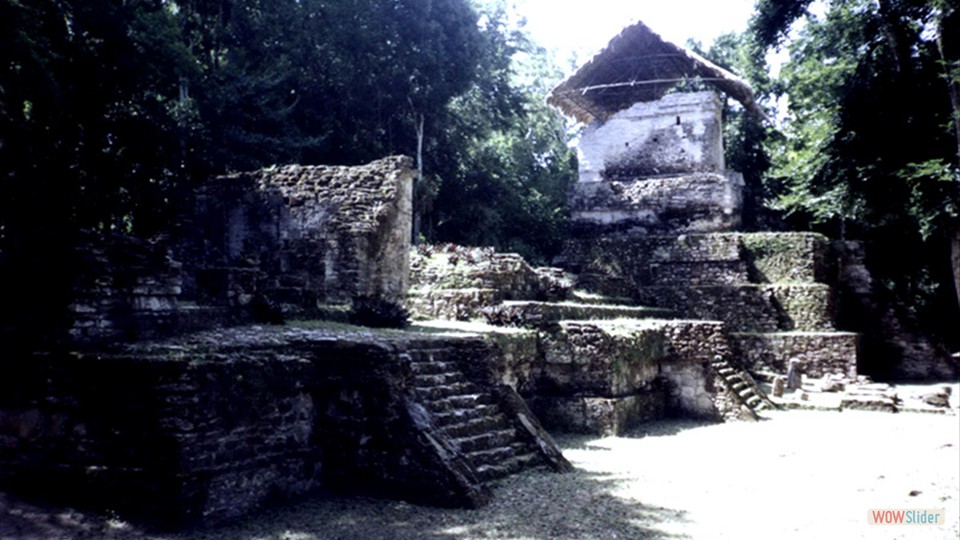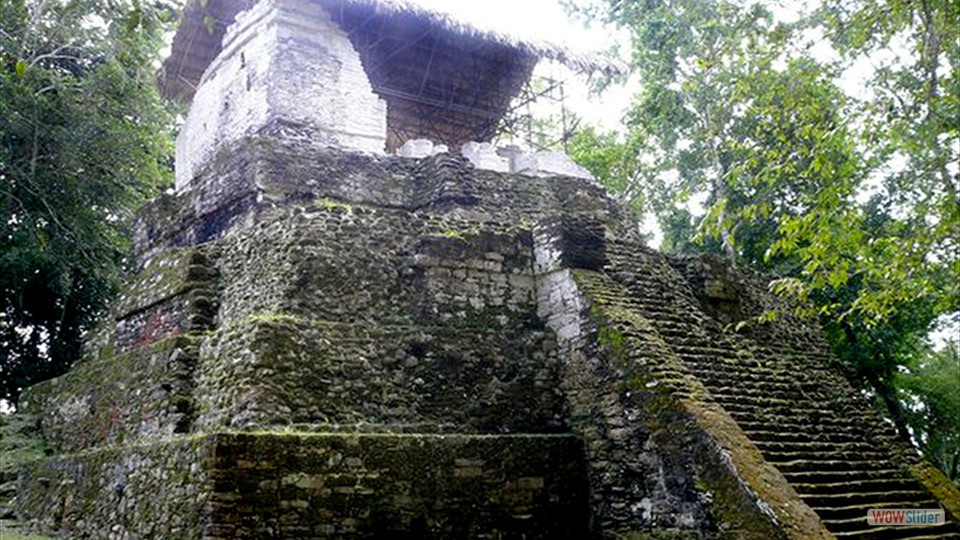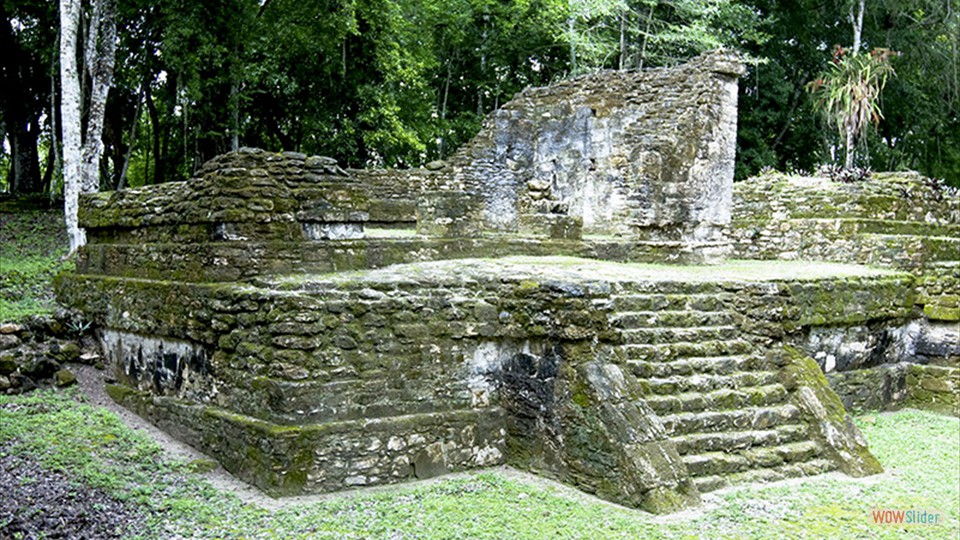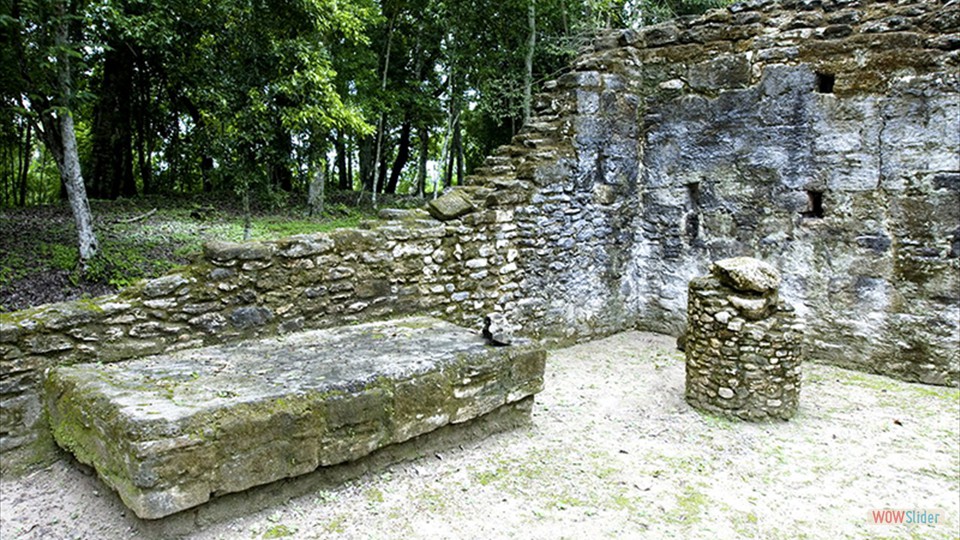Topoxte is located in what is now Department of Peten in northern Guatemala. As the capital of the Ko'woj Maya, it was the largest of the few Postclassic Mesoamerican sites in the area. Topoxte was located on a former island, now a peninsula, in the Yaxha lagoon across from the Classic period center of Yaxha. The name of the site, Topoxte, means Ramon tree's seed. The Ramon tree, commonly known as breadnut, was an important component of the ancient Maya diet.
The site was first occupied in the Late Classic by elite families from Yaxha.
Burial 49, which dates to C.E. 750, indicates a marriage of the Lady Twelve Guacamaya from Topoxte with a prince from Tikal. The site was abandoned by the end of the Classic period (C.E. 900) and reoccupied in during the Postclassic at approximately C.E. 1350. After being inhabited for about a century, it was finally abandoned in C.E. 1450.
Ten different construction phases are apparent in the archaeological record of Topoxte. There are three distinctive groups at the site, two 5 meter tall platforms, and a low residential area consisting of more than 100 structures. The site's central plaza is bounded by 3 temples constructed in the Postclassic architectural style, incorporating vertical walls, columns and flat stone ceilings.
There were two other islands Cante and Poxte, now also part of the main land, that where also occupied by people from Topoxte, the site was abandoned C.E. 1450, when the Ko'woj Maya, moved their capitol west to Zacpeten Island in the Salpeten lake, near the Peten Itza lake.





 1
1 2
2 3
3 4
4